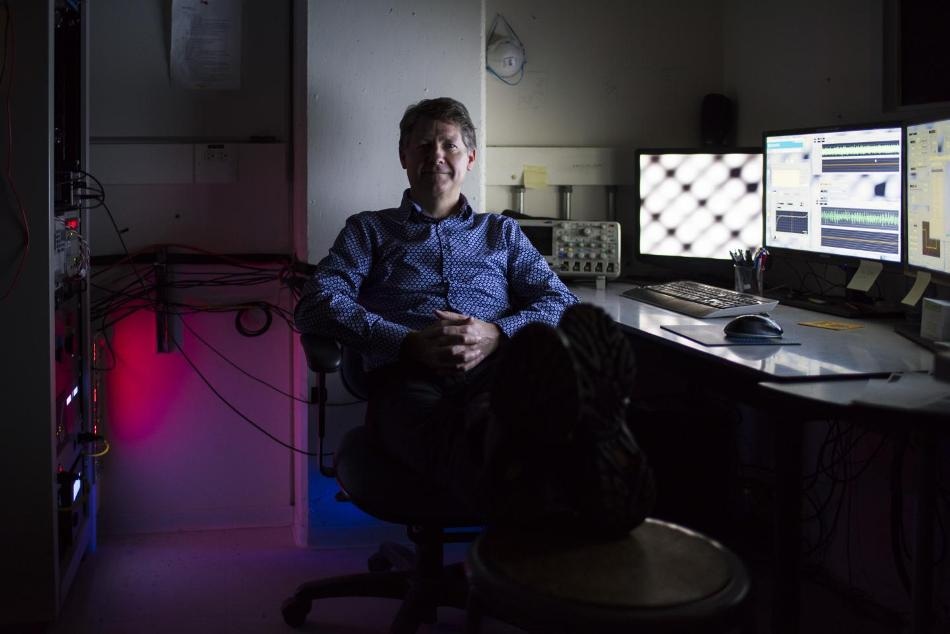Jul 27 2017
A group of Researchers headed by Physicist Robert Wolkow, from UAlberta, succeeded in taking a significant step in unlocking the potential for faster, greener, smaller electronic circuitry.
 UAlberta Physicist Robert Wolkow and his team have unlocked the potential for greener, faster, smaller electronic circuitry. CREDIT: John Ulan for UAlberta
UAlberta Physicist Robert Wolkow and his team have unlocked the potential for greener, faster, smaller electronic circuitry. CREDIT: John Ulan for UAlberta
The Researchers discovered a way to detect and then replace out-of-place atoms that had been inhibiting the working of new revolutionary circuitry. This brings forth a new variety of silicon chips for use in common electronic products, such as computers and phones.
“For the first time, we can unleash the powerful properties inherent to the atomic scale,” explained Wolkow, noting that printing errors on silicon chips are unavoidable when working at the atomic scale.
We were making things that were close to perfect but not quite there. Now that we have the ability to make corrections, we can ensure perfect patterns, and that makes the circuits work. It is this new ability to edit at the atom scale that makes all the difference.
Robert Wolkow, Physicist, University of Alberta
Atomic whiteout
Imagine a typing mistake and the possibility of going back to white it out and then type it again perfectly. Now, one will have to assume that the white out is in fact single hydrogen atoms, permitting a level of precision that was earlier unachievable.
“We can precisely erase any errors and reprint that atom in the correct place. It’s not even a compromise like white out where you either have a gooey layer or indentation. It’s actually perfect,” stated Wolkow, who worked with fellow Scientists from the University of Alberta, the National Research Council and Quantum Silicon Inc.
Scientists have seen a number of hints that atomic circuitry was within reach. However, the desired precision was earlier possible only for simple materials that were essential to be maintained at ultra-low temperatures, which indeed is impractical for daily applications demanded in personal digital devices and computers. Wolkow and his team have now discovered materials and methods to guarantee stability at room temperature, challenges that Wolkow and other Scientists from all over the world have been trying to overcome for decades.
Smaller, greener, faster
Roshan Achal and Taleana Huff, Wolkow’s Graduate Students, along with Postdoc Moe Rashidi demonstrated the possibility of overcoming these obstacles with a revised approach to the same silicon chips that are used in the currently existing circuitry. While they had earlier brought about improvements in the improved accuracy of atomic silicon printing, errors in the form of misplaced atoms always took place at the one percent level. Even though the placement errors were small, almost third of a nanometer, they however were large enough to upset circuit operation.
The students developed a dependable procedure for picking up single hydrogen atoms with their atomically sharp probe and then replacing one or more hydrogen atoms in order to erase atomic misprints in a perfect manner.
A number of pending challenges to ultra-low power atomic circuitry were also erased with their new discovery. Wolkow, Achal, and Huff’s discovery has been included in the academic paper “Atomic Whiteout,” featuring in the scientific journal ACS Nano.